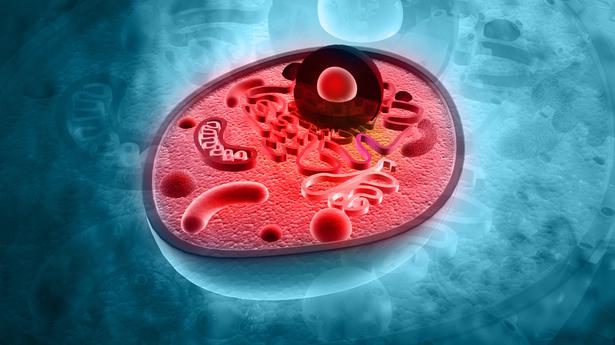
How mitochondria adapted to living within cells
The Hindu
Billions of years ago, a prokaryotic organism called archaea captured a bacterial endosymbiont
An organism that has been around from 2 billion years ago has given biologists from Centre for Cellular and Molecular Biology, Hyderabad (CCMB), a clue as to how mitochondria became an inseparable part of animal and plant cells. The researchers, led by Rajan Sankaranarayanan, identify two key transformations, one in the molecule known as DTD for short and another in the transfer-RNA (tRNA).
“Our lab works on a molecule called D-aminoacyl-tRNA deacylase (DTD). We observed some unexpected biochemistry of eukaryotic DTD that could be explained based on endosymbiotic origin of complex eukaryotic cell organelles.” Endosymbiosis is an intense form of symbiosis when one of the organisms is captured and internalized by the other.
Today, mitochondria are well known to be integral parts of the eukaryotic cell. They are dubbed the power houses of the cell, because they help in generating energy in the form of ATP within the cell, powering it. But they were not always part of the animal and plant cells. Once, about two billion years ago, a prokaryotic organism (without a nucleus) called archaea captured a bacterial cell. The bacterial cell learnt to live within the archaea as an endosymbiont. How this happened has been an important question among biologists. “In the late 19th century, microscopists observed that organelles like chloroplast [and later mitochondria] undergo division inside eukaryotic cells that resembles bacterial division, which led them to suspect that these organelles might have arisen from bacterial endosymbionts,” say Jotin Gogoi and Akshay Bhatnagar from CCMB and the first authors of the paper published in Science Advances.
By studying an organism known as jakobid, which has been around since before animals and fungi branched off from plants and algae in the process of evolution, the researchers have identified two adjustments that had to take place to facilitate the integration of the two organisms. These adjustments were made in the process of optimisation when the two organisms merged together, evidently for compatibility. The researchers show that these changes, in a protein (DTD) and a tRNA (carrying an amino acid glycine for protein synthesis) are crucial for the successful emergence of mitochondria.
Amino acids come with two types of handedness – left-handed and right-handed. Accordingly, their names have a prefix of L or D. All life forms function with only the L-amino acids, in addition to achiral glycine, in proteins. Performing the role of a proofreader, the protein DTD removes D-amino acids from entering protein synthesis. Before it got incorporated into the eukaryotes, when it was part of the bacterial cell, DTD would not act on glycine which is essential for protein synthesis. This preference was changed so that it would be compatible with the eukaryotic cell. “Eukaryotic DTD has changed its recognition code preference in order to avoid untoward removal of glycine, which is a crucial ingredient required for the same. We show in our study that this switch in the recognition code is important without which DTD will be toxic to the eukaryotic cell,” says Rajan Sankaranarayanan of CCMB, who led the work and in whose lab the research was carried out.
The other change identified by the researchers is that mitochondrial tRNA(Gly) has changed its critical nucleotide base from U73 to A73, in order to be compatible with eukaryotic DTD. “This switch in the so-called discriminator base of mitochondrial tRNA(Gly) is important for avoiding removal of glycine and thus stopping protein synthesis in mitochondria – which can be toxic,” says Dr Sankaranarayanan. This means that before the change took place in the nucleotide base, glycine would be removed, which would have been toxic for the cell as protein synthesis would not take place without glycine.
Next, the researchers plan to investigate these evolutionary dynamics in plant cells. Plant cells have two DTDs and two organelles equipped with translation apparatus of their own. “The work for first time shows how such molecular optimisation strategies are essential, when derived from different ancestors like archaea and bacteria, for the successful emergence of mitochondria and hence all of eukaryotic life as we see today including humans,” says Dr Sankaranarayanan.











